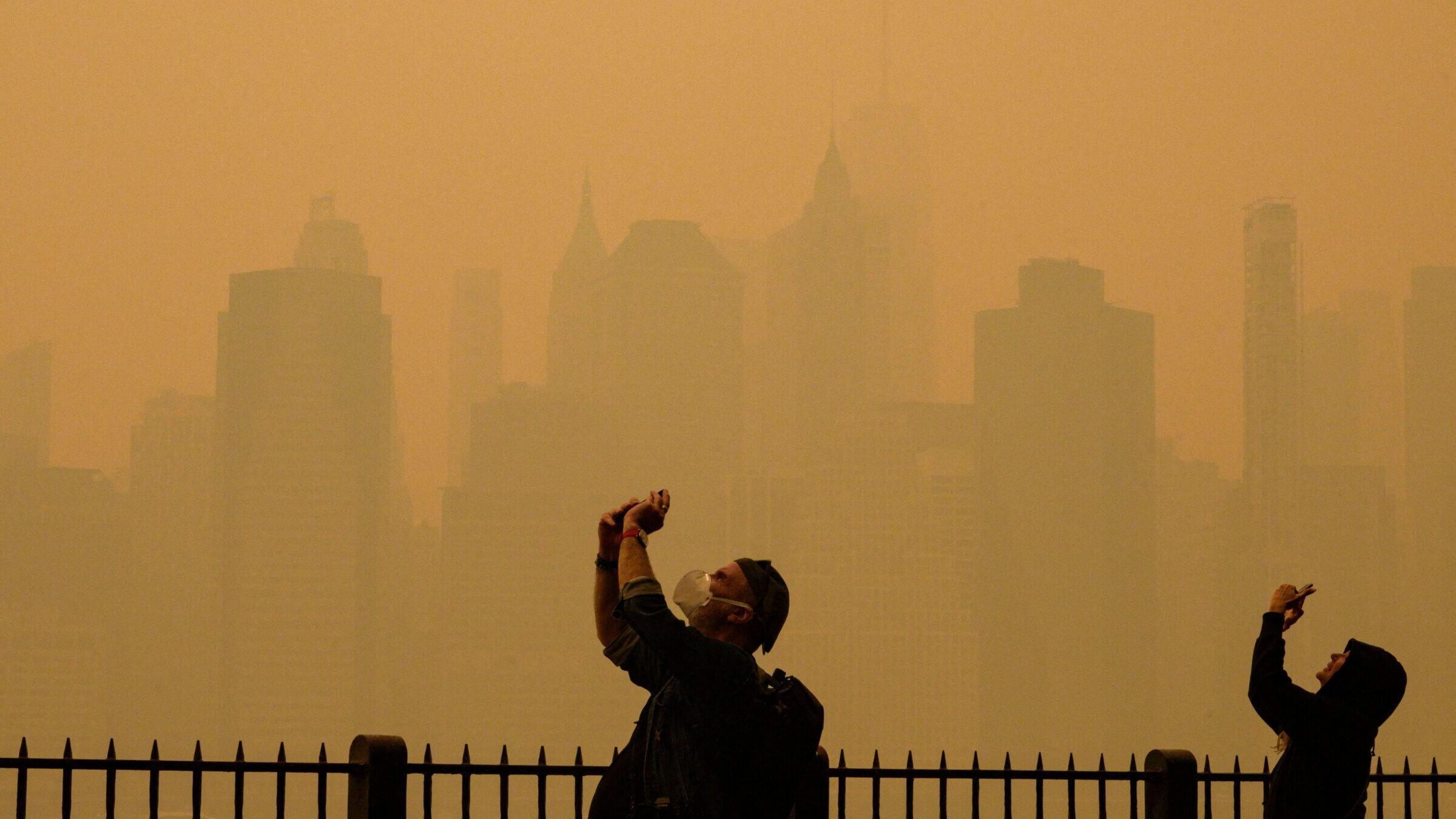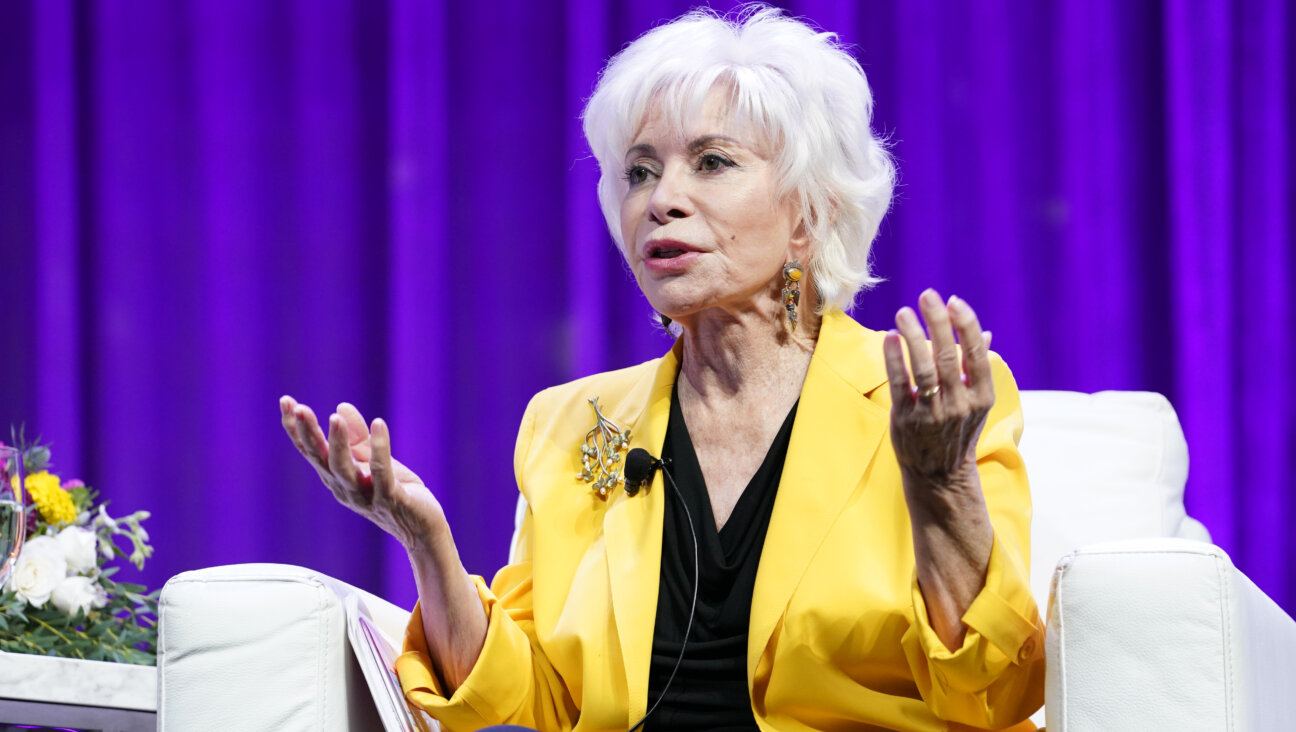Smoke-filled skies evoke the Christian apocalypse — but what does Judaism say about the End Times?
New York was engulfed by thick, yellow smog from wildfires this week, causing a lot of discussion of doomsday

People take photos of the sun as smoke from the wildfires in Canada cause hazy conditions in New York City. Courtesy of Getty Images
New York City is looking apocalyptic. Smoke from Canadian wildfires has shrouded the East Coast in a yellowish haze so thick that at various points on Wednesday, the city skyline was almost entirely obscured. The sun was barely visible as a red dot. And it has everyone thinking about the End Times.
distinctly apocalyptic vibes on the brooklyn bridge pic.twitter.com/zKCesvYyvU
— ian bremmer (@ianbremmer) June 7, 2023
BREAKING ? Is it Doomsday? Video of wildfires smoke from the George Washington Bridge, the bridge connecting New Jersey and New York City
— Insider Paper (@TheInsiderPaper) June 7, 2023
Though most people today are referring to a world-ending climate catastrophe when they talk about the apocalypse — which is fair enough — the idea was initially a religious one. The word apocalypse itself comes from Greek, where it was more accurately translated as “revelation,” and Oxford Languages, Google’s dictionary tool, defines the term as “the complete final destruction of the world, as described in the biblical book of Revelation.”
The New Testament book of Revelation has given Western society most of the images we have of the end of the world — the Four Horsemen of the Apocalypse; the mark of the beast; Satan’s reign; and, finally, the second coming of Christ, after which life on earth will be over, and people will either reside in heaven or hell. It’s a violent book, filled with war and violence and terror, and its symbols and ideas have colored most popular imaginings of the End Times.
But these elements are all Christian. So what does the Jewish imagination have to say about the end of the world?
In Judaism, there’s no single, comprehensive vision of the end of the world. Instead, many of the prophetic books offer threats of punishment — usually in the form of exile and war — for the Jews after turning away from God.
Listen to That Jewish News Show, a smart and thoughtful look at the week in Jewish news from the journalists at the Forward, now available on Apple and Spotify:
The Book of Daniel features numerous dream-prophecies about a “time of trouble,” often featuring other, evil empires taking over Jerusalem and turning away from God. Ezekiel tells of the Jews being forced into exile and, among many other violent visions, a war against Gog of Magog, during which God rains down terrors: earthquakes, hail, carrion birds eating the dead, and “sulfurous fire” — which is pretty much what New York City air smells like this week.
Today, most scholars understand the Jewish prophetic books to be speaking to their current conditions — exile from God’s promised land, war and the crushing rule of foreign empires generally looms large. And in the many centuries since the books of Ezekiel and Daniel, Jewish sages have continued to interpret the prophecies to their lived reality of diaspora. For them, these apocalyptic visions are not some distant future threat, but our current reality. (Feels relatable when you look outside this week!)
If the Jewish apocalyptic vision is already happening, and has been for centuries, however, what’s the actual end of days supposed to be like? Thankfully, nothing like the dark yellow skies we’ve been seeing this week. Instead, after the descriptions of punishments and horror, the prophecies promise a Messianic Age, a time of peace, purification and plenty under the reign of God. (Daniel and Ezekiel both even feature vignettes of raising the dead to enjoy the new prosperity.) The Jewish understanding of the end of days is far more focused on a time of joy and life than a time of death and destruction.
But perhaps it’s a thin comfort that the smoldering air is not a sign of God ending the world. After all, climate change proves that we’re pretty good at causing our own apocalypse. That means we have to keep living through this dim, smoky landscape — and we have to fix it ourselves.






















